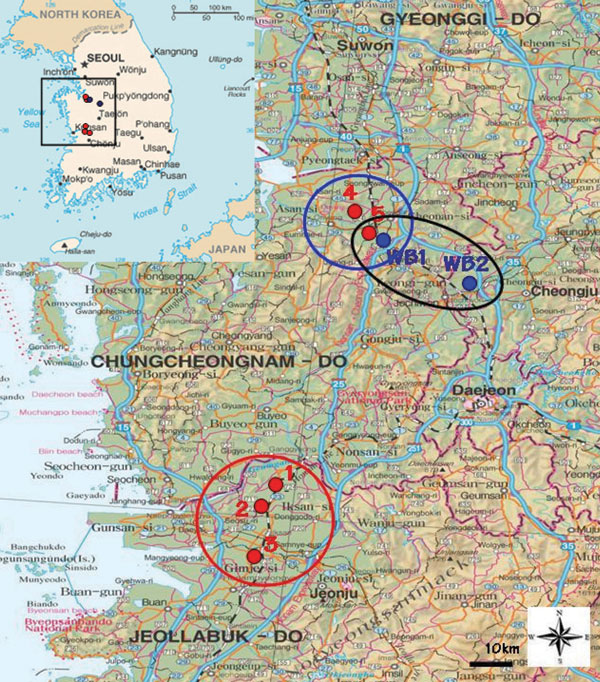Volume 14, Number 3—March 2008
Dispatch
Highly Pathogenic Avian Influenza Virus (H5N1) in Domestic Poultry and Relationship with Migratory Birds, South Korea
Figure 1

Figure 1. Location of highly pathogenic avian influenza (HPAI) virus (H5N1) outbreaks, South Korea, 2006–2007. Black box on inset shows area of enlargement. Red circle represents outbreaks in Jeollabuk-Do (first, second, and third outbreaks). Blue circle represents those in Chungcheongnam-Do (fourth and fifth outbreaks). Black oval represents regions in which HPAI virus (H5N1) isolates were isolated from migratory bird habitats during this study.
Page created: July 07, 2010
Page updated: July 07, 2010
Page reviewed: July 07, 2010
The conclusions, findings, and opinions expressed by authors contributing to this journal do not necessarily reflect the official position of the U.S. Department of Health and Human Services, the Public Health Service, the Centers for Disease Control and Prevention, or the authors' affiliated institutions. Use of trade names is for identification only and does not imply endorsement by any of the groups named above.